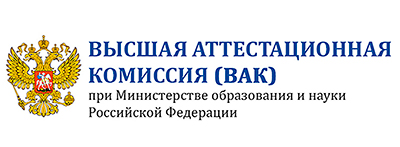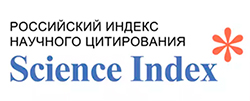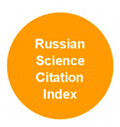Теория эпидемиологического перехода: взгляд 30 лет спустя
Аннотация
Теория эпидемиологического перехода основана на систематическом применении эпидемиологического подхода к анализу изменений во времени и пространстве состояния здоровья, уровня смертности, дожития и рождаемости в их связи с социально-экономическими и экологическими факторами, образом жизни, демографическими, медицинскими и технологическими детерминантами и/или коррелятами при различных социальных условиях. Нет сомнения, что на протяжении нескольких последних столетий в мире происходили глубокие эпидемиологические изменения, хотя у разных групп населения они начинаются в разное время и идут с неодинаковой скоростью. Цель этого очерка – по-новому взглянуть на первоначальное представление теории эпидемиологического перехода 1971 г. и перейти от трехстадийного / трехмодельного описания перехода к пятистадийному / пятимодельному.
В частности, в Положении 1 рассматривается относительный вклад смертности и рождаемости в динамику перехода, а в Положении 2 описываются этапы эпидемиологического перехода. Кроме того, в процессе перехода обнаруживаются разные виды неравенства, на которые указывается в Положении 3. Модели перехода, характерные для динамики, сроков перехода и последующих изменений в разных странах обсуждаются в Положении 4. В заключительной части статьи рассматриваются возможные сценарии изменения здоровья на пятой стадии перехода и за ее пределами.
Скачивания
Литература
Angel, Pearson, cited in: Woytinsky W.S., Woytinsky E.S. (1953). World population and production: trends and outlook. New York: Twentieth Century Fund.
Bobadilla J., Frejka T., Frenk J., Lozano R., Stern C. (1989). The epidemiological transition and health principles. The World Bank, Health Sector Priorities Review, unpublished document.
Browdy D., May P. (1983). Demographic and epidemiologic transitions among the Navajo Indians. Social Biology, 30, 1-16.
Bulatao R.A., Stephens P.W. (1992). Estimates and projections of mortality by cause: a global overview? 1970-2015. Policy Research Working Paper The World Bank. Washington.
Choe E.H. (1989). Population aging in the Republic of Korea, UNESCAP Asian Population. Cited in: US Bureau of the Census, Global Aging into the 21st Century. Washington, DC, 1996.
Coale J., Demeny P. (1966). Regional model life tables and stable population. Princeton: Princeton University Press.
Eun-Sul L. (1980). Epidemiologic transition in Korea: a new perspective in population and development studies. Bulletin of the Population and Development Studies Center, 14, 1-14.
Frenk J., Bobadilla J., Sepulveda J., Crevanties M.L. (1989). Health transition in middle income countries, new challenges for health care. Health Policy and Planning, 4(1), 29-39
Griffith G.T. (1926). Population problems of the age of Malthus. Cambridge: University Press.
Gwatkin D. (1993). The epidemiologic transition. Policy and planning implications for developing countries. Washington: National Academy Press.
Habakkuk H.J. (1953). English population in the eighteenth century. Economic History Review, 2nd Series, VI, 117-133.
Health in the Americas (1998). Pan American Health Organization. Washington, DC.
Health, United States, 1993 (1994). National Center for Health Statistics. Hyattsville, Maryland: Public Health Service.
Hicks J.R. (1942). The social framework. New York: Oxford, Unity Press.
Historical statistics of the United States, colonial times to 1970. (1989). Bureau of the Census. New York, Kraus International Publications.
Jamison D., Mosley H. (1991). Disease control priorities in developing countries: health policy responses to epidemiological change. American Journal of Public Health, SI (l), 15-22.
Kitagawa E. (1977). On Mortality. (Presidential Address, Population Association of America annual meeting, St. Louis, Missouri, April 1977). Demography, 14(4), 381-389.
Landis P.H., Hatt P.K. (1954). Population problems: a cultural interpretation. New York: American Book Company.
Last J. (1987). Hazards of health care. Public Health and Human Ecology. Appleton and Lang Press.
Last J. et al. (Eds.) (1995). A dictionary of epidemiology. Third Edition. International Epidemiological Association.
Marshall T.H. (1929). The population problem during the industrial revolution. A note on the present state of controversy. Economic History, 4, Supplement to the Economic Journal.
McKeown T., Brown R.G. (1955). Medical evidence related to English population change in the 18th century. Population Studies, 26.
McKeown T., Brown R.G., Record (1972). An interpretation of modern rise of population in Europe. Population Studies, 26.
Mesle F., Vallin J., Shkolnikov V. (1998). Reversal of mortality decline: the case of contemporary Russia. World Health Statistics Quarterly, 51: 191-206.
Murray C.J.L. et al. (1998). U.S. patterns of mortality by county and race: 1965-1994. Centers for Disease Control and Harvard School of Public Health, U.S. Burden of disease and injury monograph series.
Murray C.J.L., Lopez A.D. (1996). The global burden of disease. Cambridge, Massachusetts Harvard School of Public Health Geneva, on behalf of the World Health Organization and The World Bank.
Myrdal A. (1945). Nation and family. Kegan Paul, Trench, Trubner & co., ltd.
National Center for Health Statistics (1978). Comparability of causes of death statistics, figures and tables, and technical notes describing trends in ischemic heart disease mortality PHS, HEW 1-42.
Office of the Registrar General, India (1988).
Olshansky J., Ault B. (1986). The fourth stage of the epidemiologic transition: the age of delayed degenerative diseases. The Milbank Memorial Fund Quarterly, 64(3), 355-391.
Omran A.R. (1969). The epidemiologic transition. Epidemiologic Aspects of Health and Population Dynamics. A Faculty Seminar. (Gandhigram Institute of Rural Health and Family Planning, March/April 1969 Bulletin), IV(1), 6-59.
Omran A.R. (1971). The epidemiologic transition: a theory of the epidemiology of population change. Milbank Memorial Fund Quarterly, 49, 509-538.
Omran A.R. (1977). A century of epidemiologic transition in the United States. Preventative Medicine, 6, 3-51.
Omran A.R. (1982). The epidemiologic transition. In J. Ross (Ed.), International Encyclopedia of Population. New York: The Free Press.
Omran A.R. (1983). The epidemiologic transition theory: a preliminary update. Journal of Tropical Pediatrics, 39, 305-316.
Omran A.R. (1986). The epidemiologic transition in the Americas. Pan American Health Organization and the University of Maryland.
Omran A.R., Roudi (1993). The Middle East population. Population Reference Bureau. Washington, DC. Puzzle Population Bulletin, 18(1).
Rodriguez-Garcia R. (1996). Health and development for all. World Health Forum, 17, 344-346 (Round Table).
Rodriguez-Garcia R. (1997). Health economics and development: Working together for change. In Shahi et al. (Eds.), International perspectives in environment, development and health. New York: Springer.
Rodriquez-Garcia R. et al. (1999). The legislative and policy environment for adolescent health to Latin America and the Caribbean. Washington D.C.: Pan American Health Organization.
Rogers R., Hackenberg R. (1987). Extending epidemiologic transition theory: A New Stage. Social biology, 34(3-4), 234-243.
Russell J.C. (1958). Late Ancient and Medieval population. Transactions of the American Philosophical Society, 48 (June): part 3.
United Nations (1996). World population prospects, 1994 Edition. New York.
United Nations (1998). World population prospects, 1996 Edition. New York.
US Bureau of the Census (1989). Historical statistics of the United States, Colonial Time to 1970. New York: Klaus International Publications.
Velorse E. (1965). Elements of natural movement of populations. Oxford: Pergamon Press.
World Health Organization (1997). WHO Reform, Renewed Health-For-All Strategy: Draft Policy for the 21st Century. Report of the Director General Executive Board 100th Session. Geneva, World Health Organization.
World Health Organization (1998). World health report 1998. Life in the 21st century, a vision for all. Geneva, World Health.
Yach D. (1998). In Gwatkin D. The epidemiologic transition. Policy and planning implications for developing countries. Washington, D.C.: National Academy Press.
























